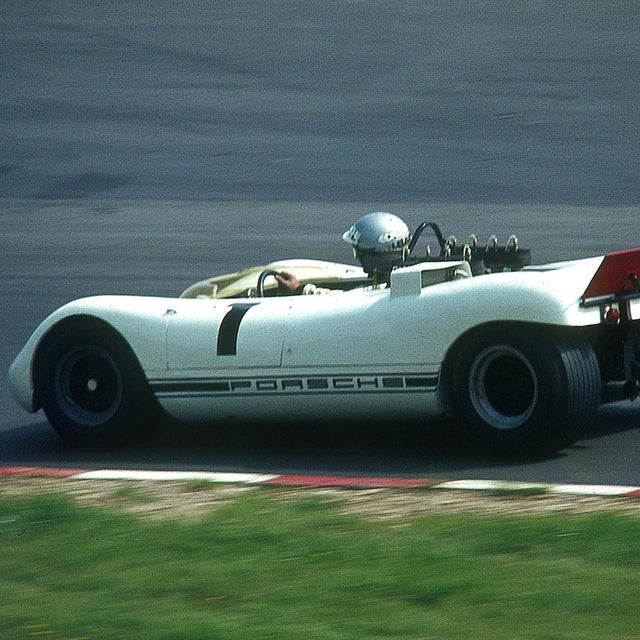It was a year of immense change—both politically and technologically—and German sports racing car manufacturer Porsche had their own history-making vehicle to reveal: the 909 Bergspyder—or "mountain" spider.


Until the late ’60s, Porsche competed as a factory in hill climb events, seeing them as ideal proving grounds for their cars. The twisting, high-altitude roads helped engineers learn how to prioritize handling and experiment with lightweight materials, not to mention explore their cars’ limits in unfamiliar territory.
As you may expect, Porsche were dominant. Really dominant. In the 24 trophy-eligible European Hillclimb Championship classes from 1958-1968, Porsche won 20 of them outright.
In 1967 and 1968, Porsche's lightweight 910 Bergspyder (the 910 was essentially an updated 906) were the championship-winning machines. With between 200 and 270 horsepower and weight around 420 kg (925 lbs.), they were extremely nimble and well-suited to mountain roads.
Responding to a threat of a new hillclimb special from Ferrari, brilliant then-Porsche motorsport engineer Ferdinand Piëch (who was later responsible for the Porsche 917, Audi Quattro, Volkswagen New Beetle, Bugatti Veyron, among others) ordered the creation of the 909 Bergspyder—a super lightweight race car that would push the boundaries of then-modern material science. How light?
• 2014 Smart fortwo: 1686 lbs (765 kg)
• 2014 Formula 1 car minimum weight: 1415 lbs (642 kg)
• 2014 Caterham Seven 160: 1080 lbs (490 kg)
• Ariel Atom: 1005 lbs (455 kg)
• 2014 Honda Gold Wing motorcycle: 933 lbs (423 kg)
• Light Car Company Rocket: 882 lbs (400 kg)
• 1968 Porsche 909 Bergspyder: 826 lbs (375 kg)
That's right: the 909 was nearly half the weight of a modern F1 car, lighter than some motorcycles, and 1/5 the weight of a Bugatti Veyron. Legend has it that Piëch judged progress with a magnet—if it stuck to any part of the car, engineers were ordered to find a lighter material to replace steel parts.
It had an all-aluminum chassis, titanium suspension, loom silver wiring in place of copper, and balsa wood ballast resistors for the ignition system. It had a nitrogen-pressurized titanium/rubber Kugeltank fuel cell. Why was it pressurized? So that Porsche didn’t need to use a fuel pump! (That said, it was a bit unreliable, so electric fuel pumps were often fitted in a pinch.)
Even the carcinogenic material Beryllium was used for its brake disks—Porsche was only able to make five disks, so they were fitted to the faster of the two cars. Powered by a 275 horsepower Formula 1-derieved flat-8 engine, it's said to have hit 100 km/h (62 mph) in 2.4 seconds, faster than the modern McLaren P1 hypercar.
Porsche built two 909s, campaigning them in 1968 and earning two podium finishes: a 2nd and 3rd. Star hillclimb driver Rolf Stommelen drove the car in both events, probably suffering from a broken arm earned earlier in the year—there's no doubt the car had the raw speed to win a race outright.
The 909 would be the company's last dedicated hillclimb machine, as the company ended their factory European Hillclimb Championship involvement at the end of that year. It stands, like the Apollo 7 mission in the same year, a “moon shot” that saw Porsche chase every available option in order to make the lightest race car possible. Even today, it has the numbers to hang with the very best—but its rarity, exotic construction, and value mean the Bergspyder is not likely to be driven in anger again.




Image Sources:banovsky.com ,vwvortex.com




















































